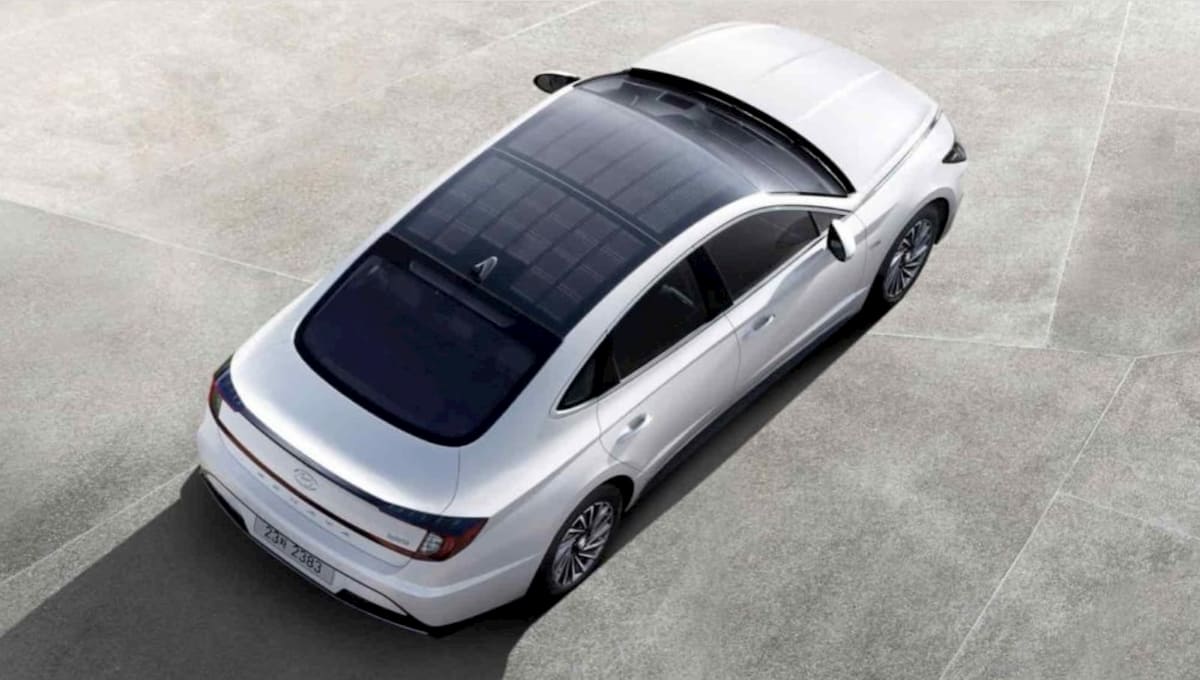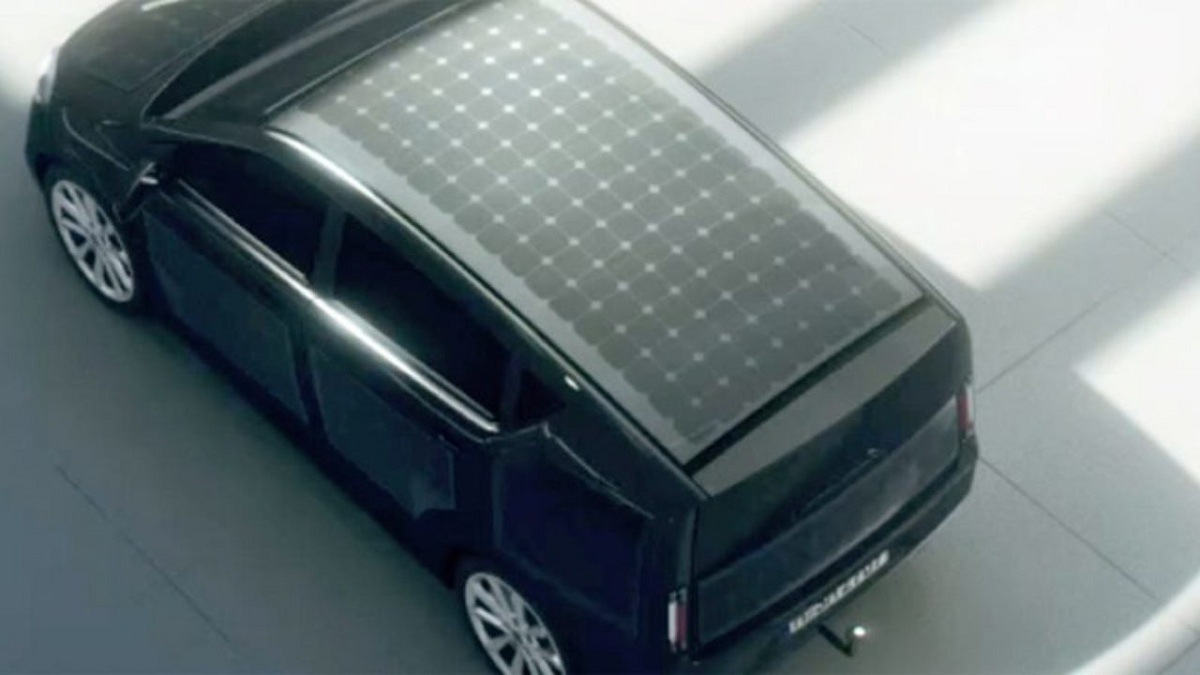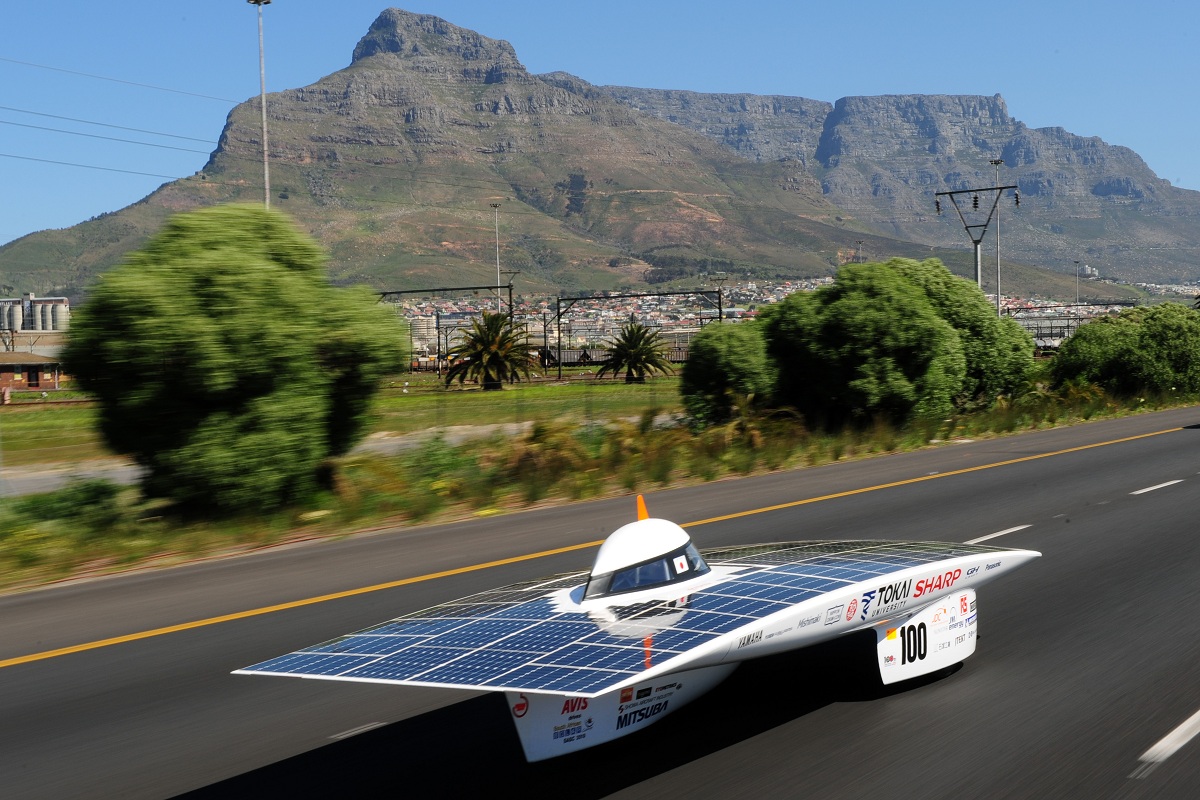
El solar car It is one that has an electric motor capable of obtaining the energy to operate from Solar panels that are installed throughout the surface of its body. These solar vehicles have a fairly efficient technological development and may become known in the market.
Therefore, we are going to dedicate this article to tell you everything you need to know about the solar car, what are its characteristics and the technology it carries.
Solar car

It is a car with an electric motor that draws energy from solar panels installed on the entire surface of the car's body. Basically, they are electric vehicles in all aspects related to their operation and propulsion mechanism, and their difference lies solely in the source of electrical energy. They should not be confused with solar cars, which are cars that obtain electricity from solar energy drawn from the exterior of the car.
Solar cells installed in these cars convert solar energy into electrical energy, which can be stored in the battery or used directly in the engine. Traditionally, solar cars are known for their low autonomy, in part because it is difficult to increase the efficiency of solar panels and their design is designed to minimize aerodynamic drag.
In addition, most experimental prototypes are designed and manufactured with very light materials to promote overall energy efficiency. But in the medium term, there are already prototypes and projects to bring solar cars to the market.
Questionable feasibility

As we have already introduced, solar cars absorb solar energy through panels installed on their surface and convert it into electrical energy for storage in so-called solar cells. This electrical energy powers the car's engine, just like any other type of electric car.
The problem starts here, because The feasibility of solar cars that depend 100% on solar energy has been questioned for many reasons. One of them is the low energy efficiency of solar panels. In fact, the most efficient solar photovoltaic cells currently exceed 26% and are expected to reach 29% in a few years.
What does it mean? Solar battery charging requires a very large area of high-efficiency solar panels. The electric motor is always more efficient than any combustion option, but in this case (with the solar origin of electricity) we have the disadvantage of the energy potential per unit of mass (the amount of energy released by each kilogram of fuel), far superior in gasoline or diesel options.
Solar battery

Another aspect is relying on the sun to charge the battery. This is obvious, but depending on the country and latitude, this will be the true load capacity of these cars on a day-to-day basis, As long as they have no other way to charge the battery, like the traditional plug of electric cars.
There is no doubt that the idea of owning a green car powered by solar energy is attractive for many reasons such as sustainability, respect for the environment, economy or innovation. However, except for some long-term projects that are not clearly defined. , solar energy is The best application in automobiles is as a supplementary energy source for energy systems such as climate control, lighting or multimedia systems.
Some projects
Aside from the racing world, the fact is that photovoltaic cell technology is currently uncommon in the automotive market. The main obstacles are the high cost of implementing this technology in automobiles, limiting the size of the vehicle on the number of panels that can be placed and the range and speed achievable.
Several solar-powered electric vehicle projects are trying to get consumers to buy into it. The one that has attracted the most attention is Lightyear One, which has a range of more than 700 kilometers. It uses photovoltaic cells. According to its developers, this photovoltaic cell can store 20% more energy than traditional batteries and work independently, although part of that is that they are in the shadows.
Its price is 150.000 euros, which is far from being a viable option for most people, but the possibility of your technology being used by other vendors can open up interesting areas.
Another strong bet is Sono Sion, which uses 248 solar cells distributed throughout the body to provide an additional 34 kilometers of cruising range for the 250 kilometers reached with the battery charge. Its market price is 25.500 euros.
There are other projects that hope to be more accessible and have been stranded by financing difficulties. This is the case of the Spanish «mö», a two-seater urban van with an approximate price of 5.000 euros, which recently announced that the project was interrupted due to the impossibility of producing its first products.
Could the solar car be traded?
Although public access to solar-powered cars is a distant reality, solar power can also support more sustainable mobility through other options. Solar-charged vehicles are those vehicles that do not have photovoltaic panels on their own surface and they move due to the electricity generated by solar panels located in external infrastructure (whether they are roofs of houses, garages, etc.).
There is also an option, which has been used in several commercial models, of placing solar panels on the roof of electric or hybrid vehicles as a support system. These panels are far from being able to move the vehicle, but they can provide the required energy, such as the use of air conditioning.
So far, the installation of photovoltaic panels in cars has not been proven to be the most effective solution to the problem of substitution of fossil fuels, but they can support other systems. As a last resort, the future of sustainable transportation will involve understanding how to take advantage of each clean technology.
I hope that with this information you can learn more about the solar car and its characteristics.